| Return to the top page. | ||||
| Research overview Our main interest lies in clarifying the structures that underlies function of the central nervous system and then understanding their function. The cerebellar system is one of the main focused sites in the lab. Dysfunction of the cerebellum causes ataxia, a movement disorder associated with impaired control of movement. We use electrophysiological, morphological and cell-biological approaches. We are also focused on the part of the central nervous system that is involved in control of eye movements. The eye movement control system is located in the cerebrum, brainstem and cerebellum. It is also important clinically. |
||||
1)Research on the cerebellar system Distinct regions in the cerebellum make specific connections with different areas of the brain and are involved in the control of various movements including eye movements. For example, the neuronal circuitry that connects the lateral cerebrum, pontine nuclei, cerebellar cortex (hemisphere), cerebellar nucleus (dentate nucl.), thalamus and cerebrum is important for initiation, execution and control of movements. To understand cerebellar function, it is important to understand the organization of the cerebellum into distinct anatomical regions, to characterize the specific neuronal circuitry of these regions, and to identify how the cerebellum is organized into regions and functions by way of the input and output systems. Our systematic approach to this question includes (developmental) anatomy, molecular biology, and electrophysiology. We have expertise in neuronal labeling with marker molecules and tracers, single-axonal reconstruction, three-dimensional mapping of neuronal projection patterns. |
||||
| Cerebellar molecular expression patterns | Projection patterns of single axons | |||
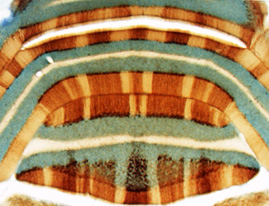 |
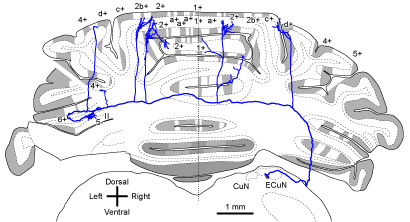 |
|||
| Developmental formation of cerebellar compartments | Comparative morphology among primates, rodents and birds | |||
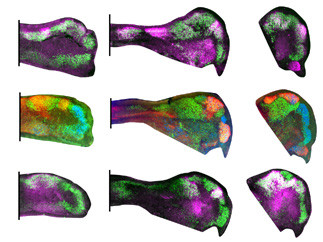 |
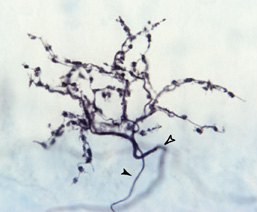 |
|||
| Anatomy and physiology in the mice with visualyzed stripes | ||||
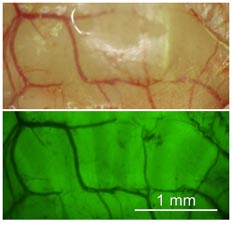 |
||||
2)Neural mechanism of eye movement control An animal fixates on a target of interest by moving its eyes and head. This eye-head coordination system is an important model of motor control in the central nervous system of higher mammals. To understand the mechanism of the visuo-motor transformation in eye movement system, we analyze neural mechanisms of signal transformation from the superior colliculus (center for rapid gaze shifts) to the brainstem, the midbrain, and the spinal cord using electrophysiological and morphological methods. Furthermore, we analyze the mechanisms for the control of eye movements and visual fixation in the systems from the frontal and parietal cortices to the superior colliculus and the brainstem. |
||||
| Behavior analyses in primates | ||||
 |
||||
| Detailed analyses of brainstem neuronal circuits | ||||
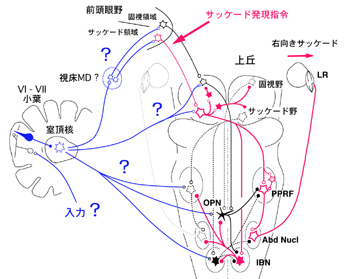 |
||||
| Return to the top page | ||||